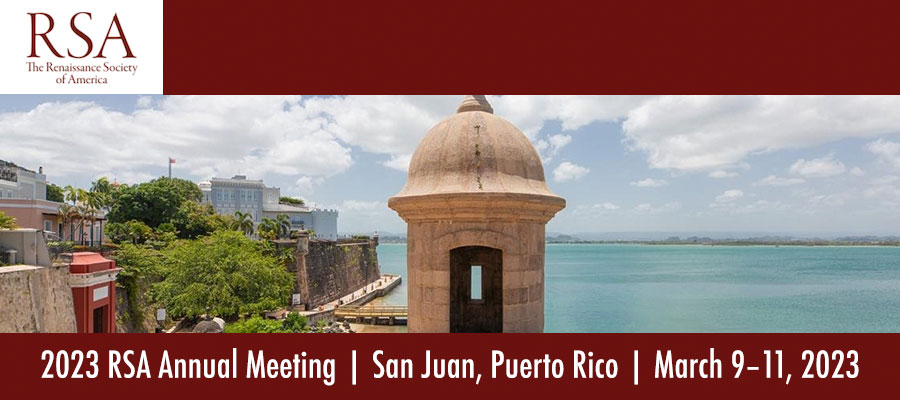Chronotopes: Temporal Markers Shaping Space in the Late-Medieval and Early-Modern World, session at 2023 Renaissance Society of America Annual Meeting, San Juan, Puerto Rico, March 9–11, 2023
The way people in the past experienced their individual and shared present was interrelated with the space they inhabited. In recent decades, reflections on the perception of time in pre-modern and early-modern periods have multiplied. As a result, the static and univocal image of the Middle Ages and early modernity as eras rooted in a perfect biblical past or as a revival of a mythical past, obstructing any interpretation of an active present and of a future free of its eschatological dimension, is being revised. One of the possible ways to reconsider the relation of pre-modern and early-modern people with time, and in particular with the(ir) present, is to investigate what Mikhail Bakhtin called the ‘chronotope’. Within this literary theory, the perception of the world results from a specific experience of time and space, which are considered inseparable and in constant interaction. The daily or weekly collective rhythms of market day or the fair on the town square, the accelerated frenzy of celebrations in the city hall or church, the reflective hours spent alone waking at a deathbed… The people inhabiting a chronotope were perfectly aware of the order imposed by well-defined temporalities, yet historical studies have too often disconnected this temporal dimension from their analysis of the use of a place or space.
In this interdisciplinary session, we would like to discuss the interconnectedness of time and space in the late-medieval and early modern world. Possible topics include, but are not limited to:
- cases in which the urban environment provides rhythms to the city's time.
- differences between urban and rural chronotopes
- visual and literary representations of chronotopes that serve to identify events
- sources that connect time and space
- different individual experiences of time in a single space
- places of memory that concentrate different temporalities over decades
- the temporalities of private spaces
Organizers
Elodie Lecuppre-Desjardin, Université de Lille
Marije Osnabrugge, Université de Genève
Jan Blanc, Université de Genève
Thalia Brero, Université de Genève
